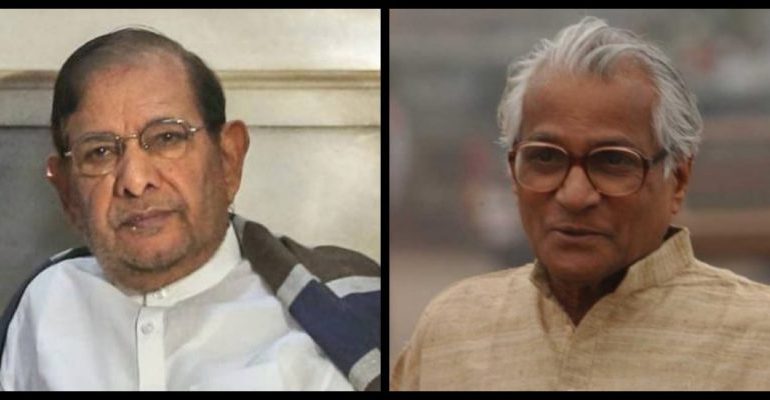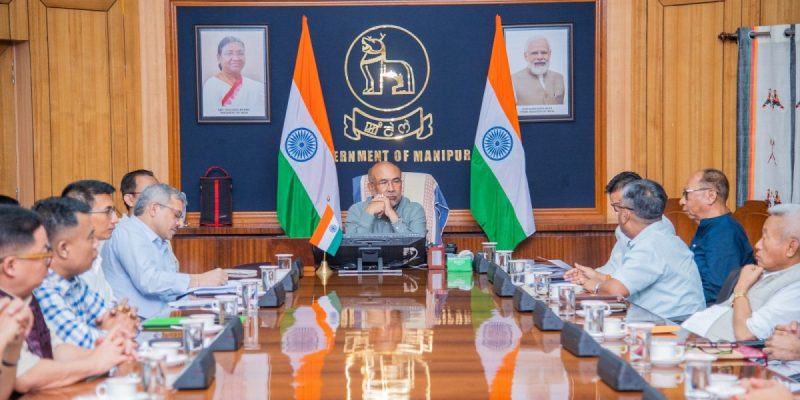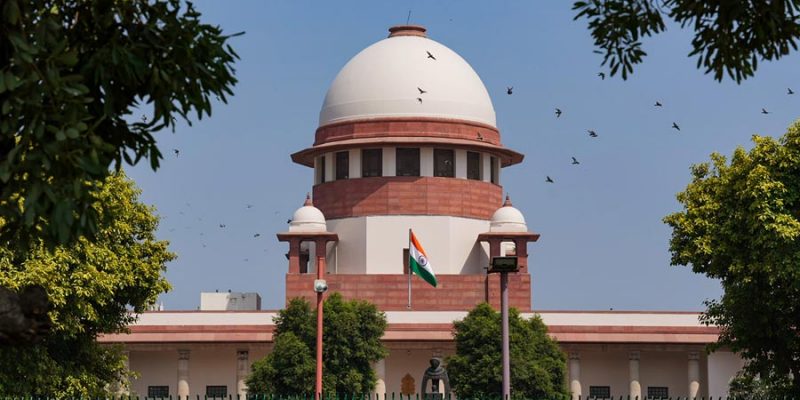How Lohiaite Socialists Found Themselves Caught in Sangh Parivar’s Chakravyuh

Sharad Yadav had a dramatic debut in the Indian parliament in 1974. But his death on January 12 went relatively unnoticed.
The ailing Lalu Prasad Yadav – perhaps the greatest in the dwindling breed of the Lohiaite socialists – expressed grief on the demise of two of his socialist compatriots, Mulayam Singh Yadav and Sharad Yadav, within three months in an emotionally choked voice from Singapore.
But it’s more appropriate to compare Sharad’s death with that of George Fernandes, four years ago in 2019, than with Mulayam. The Catholic Christian turned charismatic Lohiaite had stunned the mighty Congress by winning the Bombay (now Mumbai) Lok Sabha seat in 1967. Sharad, a gold medallist engineering graduate, too had stunned the mighty Indira Gandhi by winning the Jabalpur Lok Sabha seat in 1974 as a joint opposition candidate. Jayaprakash Narayan had famously declared Sharad – 27 years old then – a “people’s candidate”, and his victory a “people’s victory”.
Both George and Sharad made Bihar their karmabhoomi. Both fell forlorn in the last leg of their lives and both died unsung. It was largely because both ardent Lohiaites fell prey to the Sangh parivar’s “chakryavuh” – the military formation used in the Mahabharata to trap the enemy.
The Sangh parivar’s chakravyuh, though, was vastly different from the one laid by the Kauravas against Arjuna’s son Abhimanyu. Abhimanyu fought till his last breath; the Kauravas failed to win over him. But Fernandes and Sharad fell into the trap very easily. The Sangh parivar lured them with power and lucre, making them abandon what constituted the basis of their politics. They fell into the charms of “liberal” A.B. Vajpayee and “genial” L.K. Advani, and lost the path shown to them by Lohia and JP. They stayed ailing and inactive for a long period of time before their deaths. The deprived sections and the minorities – battling under the Sangh’s ceaseless attack on them under the Narendra Modi-Amit Shah era that began in 2014 – had lost hope in them much before they met their end.
From 1998 to 2004, Fernandes as the convenor of the National Democratic Alliance (NDA) functioned more as an emissary of Vajpayee. Leaving behind his fire against the Sangh from 1960’s onwards, Fernandes even forgot to criticise the rioters of Gujarat. Vajpayee had asked Modi, the then chief minister, to observe “rajdharma”. But Fernandes kept a studied silence on the genocide. In fact, he conspired against his protégée Nitish Kumar when the latter opened a front against his Gujarati counterpart from 2009 onwards. Instead of supporting Nitish, Fernandes sided with the BJP leaders in the Modi camp.
Listen: ‘What Governor Ravi Did in His Tamil Nadu Speech Was Out of Order and Impertinent’
Unlike Fernandes, who along with Madhu Limaye was the most ardent adherent of Lohia earlier, Sharad rose under the guidance of JP and worked more under the patronage of Choudhary Charan Singh and Devi Lal. Sharad hit the headlines by championing the backward class movement in the wake of the implementation of the Mandal Commission report in 1990. He took out the Mandal rath yatra to counter Advani’s Ram rath yatra. But be it because of his personal jealousy or competitive politics, Sharad fell out with Lalu – once Sharad’s protégée – in 1997. He looked more insecure after parting ways with Lalu. He joined the Vajpayee cabinet. There too, he couldn’t command the Sangh parivar’s trust as much as Fernandes did. Nitish – another one Sharad’s protégées – got him to replace Fernandes as the Janata Dal (United) president in the early 2000s. But Sharad, instead of pursuing larger socialist politics, got into competition with Lalu in Bihar. Lalu eventually outsmarted him.
Thus, because of their own failings, both Fernandes and Sharad fell into the Sangh parivar’s chakravyuh and were left forlorn in the last legs of their lives. The 1990’s witnessed the decline of the Congress at the grassroots level in the Hindi heartland. Mandal politics propelled regional satraps Lalu and Mulayam, who consolidated their OBC support bases. Seeing these leaders with larger social bases, Muslims broke out from the Congress fold and shifted to them. On the other hand, the resurgent BJP made inroads into the Congress’s upper caste and Dalit vote base. In the beginning, the Sangh parivar made their way into the OBC vote base by aligning itself with splinter groups of Mandal-related parties – Samata Party in Bihar, Lok Dal in Haryana, and Apna Dal and other caste-based parties in Uttar Pradesh.
The Modi-Shah era infused Hindutva into India’s body politic in a starker manner. The BJP has weaponised a large chunk of the OBCs and Dalits using welfare schemes laced with jingoistic slogans and violent campaigns against minorities in the name of love jihad, cow protection and nationalism.
Many socialist theorists believe that Lalu, besides representing Lohia’s legacy, also carries the streaks and mores of the iconoclast revolutionaries of freedom struggle era, B.R. Ambedkar and Erode Venkatappa Ramasamy alias Periyar, father of the Dravidian movement in Tamil Nadu. Lalu has been a relentless campaigner against the Sangh’s politics for over 35 years.
And Nitish has proverbial Machiavellian streaks. He was the first among the NDA partners to notice what he referred to in Modi (without naming him) as “adhinayak or adhinayakwadi (dictator or dictatorial)”, rose in revolt against him way back in 2009 and broke out from the BJP in 2013. He buried the hatchet with Lalu and formed the Mahagathbandhan, winning Bihar in 2015 against the BJP.
However, he switched over to the NDA, making corruption an issue after the central investing agencies framed his deputy Tejashwi Yadav in cases in 2017. But Nitish has himself described his 2017 switchover as a “mistake” and now has got back to the Mahagathbandhan, embarking on the exercise to unite opposition parties against Modi-led dispensation.
Also read: ‘Vote Bank Politics’: Haryana Govt Faces Flak as Dera Chief Gets Fourth Parole in a Year
Is the time ripe for a change? The socialist theorist who learned lessons in socialism from Kishen Patnaik, Yogendra Yadav, in an interview to Karan Thapar recently said that there is “noticeable churn” in the politics of the country. Yogendra, who is accompanying Rahul Gandhi on the Bharat Jodo Yatra, explained that the Yatra has galvanised people and has also brought to the fore a sagacious campaigner in Rahul against the Sangh. Though Rahul focused on forging unity among the people during his Yatra, he has said more than once that he will make all sacrifices to salvage the country from the vice-like grip of communalism. In a way, efforts – though still at a nascent stage – are on to converge political forces against the Sangh and unite people around the narrative based on real issues of unemployment, price rise, growing poverty, inequality, falling balance of trade and security concerns.
In a way, Nitish – an active and operational socialist leader – is emerging as a flicker of hope among the supporters of socialist politics. He has the backing of his old pal Lalu – ailing but still the biggest hero of the deprived sections – in the Hindi heartland.
Nalin Verma is a senior journalist, media educator and independent researcher in social anthropology.







